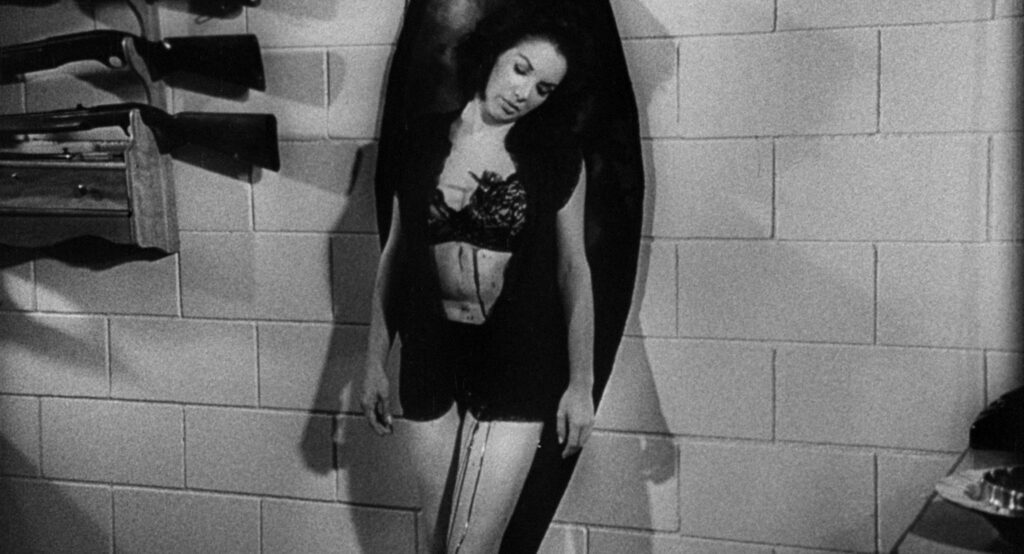
Chock full of gratuitous nudity and primitive gore effects, No Tears For The Damned (1968) is a regional B-Movie that riffs on the themes of Psycho (1960). No Tears For The Damned is a slasher film made in the vein of Al Adamson and Herschell Gordon Lewis. It’s a lurid affair shot on location in Las Vegas complete with show stopping musical numbers.
At its core, No Tears For The Damned addresses the same themes of gender identity and childhood trauma as Psycho. But No Tears For The Damned deviates from Psycho by presenting a respectful depiction of a gay man as well as re-orienting the narrative around the relationship between a husband and wife. No Tears For The Damned may be a conceptual descendent of Psycho, but formally it has just as much in common with Sam Fuller’s The Naked Kiss (1964).
Gillian Simpson plays the Las Vegas prostitute who marries momma’s boy Robert Dix. It’s the disharmony of their marriage that leads Simpson to discover Dix’s homosexuality and his penchant for murdering women with long dark hair. Simpson gives an intensely melodramatic performance that is matched by the campiness of Liz Marshall who plays the overbearing mother.
No Tears For The Damned offers viewers three varieties of spectacle. One is the over-the-top domestic melodrama where pillows are thrown and pictures are torn. The second is the spectacle of Vegas musical revues and topless dancing. The third is the spectacle of the slasher film wherein semi-naked women are butchered by a gloved killer. No Tears For The Damned juxtaposes these scenes without a care for tonal whiplash, embracing the fundamental role of schadenfreude as entertainment.
The content of No Tears For The Damned was hardly controversial or edgy when the film was released in 1968. However, the film was made four years prior when nudity and blood were still relatively taboo even in drive-in movies. Placing No Tears For The Damned temporally it makes more sense to see it as a product of 1964 rather than ’68, timing it in conjunction with the advent of the giallo in Italy.
